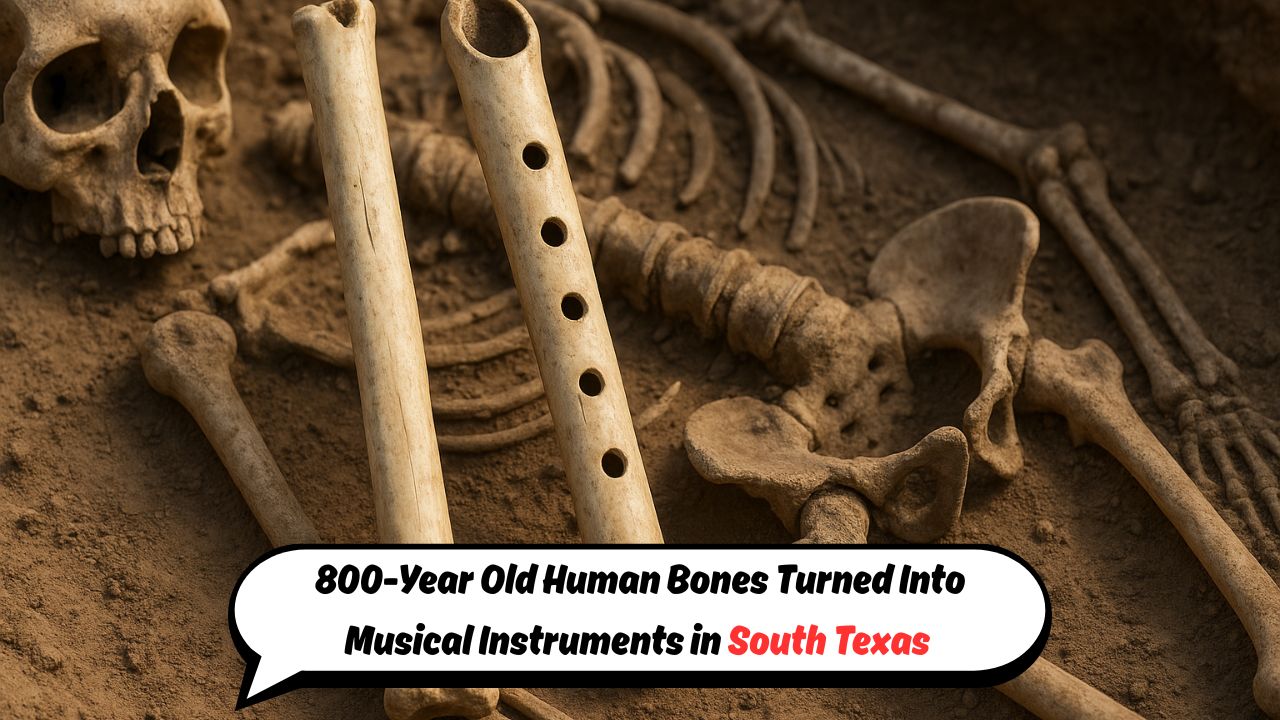800-Year-Old Human Bones – Archaeologists in South Texas have made a discovery that has stunned historians and researchers alike. Excavations revealed 800-year-old human bones that had been carefully carved and transformed into musical instruments, sparking debates about their origins and purpose. The instruments, resembling ancient flutes and whistles, point towards ceremonial use, potentially tied to rituals that carried deep spiritual meaning. Experts suggest these could be linked to Aztec-era practices, where music played a vital role in connecting with deities and guiding rituals of life and death. The discovery not only highlights the advanced craftsmanship of ancient cultures but also raises intriguing questions about cross-cultural exchanges between Mesoamerican civilizations and indigenous communities in Texas. While some believe these findings reveal a forgotten cultural blend, others argue they are evidence of ritualistic practices that reached far beyond central Mexico. This mystery has opened a new chapter in understanding how music, death, and belief systems were intertwined nearly a millennium ago.
Ritual Use of Human Bones as Instruments
The transformation of human remains into instruments suggests that these objects were far more than simple musical tools—they were sacred. In Aztec traditions, music often accompanied ceremonies of sacrifice, fertility, and war, serving as a channel to honor the gods. The bones found in Texas may have been brought from afar or crafted locally under the influence of Mesoamerican culture. Scholars argue that their use likely symbolized power, transformation, and spiritual communication. The haunting sounds of bone flutes might have been used to invoke spirits, guide souls to the afterlife, or amplify the impact of ceremonies on communities. This interpretation aligns with artifacts found in Mexico, where similar bone-made instruments have been documented. The Texas discovery, however, expands the geographical scope of such practices, hinting at larger networks of cultural and spiritual exchange than previously imagined.
Archaeological Significance of the Discovery
This finding carries immense importance for archaeology and anthropology. Human bone instruments represent a convergence of art, religion, and mortality, offering a rare glimpse into the symbolic worlds of ancient peoples. For South Texas, the discovery reshapes narratives about cultural interactions, suggesting that communities there were not isolated but engaged in broader exchanges with Mesoamerican civilizations. The craftsmanship reveals both reverence and ritual, pointing to a worldview where the dead continued to play an active role in community life. Moreover, the instruments provide evidence that music was not merely entertainment but a deeply spiritual medium of communication. Researchers believe that continued study of these objects could unlock details about burial practices, trade routes, and spiritual beliefs that bound people together across vast regions. This elevates the discovery into a vital piece of the puzzle in understanding early North American history.
Mystery of Cross-Cultural Connections
The biggest mystery surrounding this discovery lies in its cultural connections. Were these bone instruments crafted by local tribes under Mesoamerican influence, or were they imports brought by traders or migrants tied to the Aztec empire? Some theories suggest that rituals involving human bone music may have spread north through cultural diffusion, reaching Texas communities who adapted them to their own traditions. Others believe they could signify migration or direct presence of Aztec-related groups in the region. This ambiguity adds to the fascination, as the instruments become more than relics—they are witnesses to ancient journeys, interactions, and shared spiritual ideologies. Their existence reveals that even centuries ago, human societies were interconnected by ideas, beliefs, and practices that transcended borders. As researchers continue their investigation, these eerie yet beautiful artifacts may finally help decode the spiritual map of the Americas before European contact.







